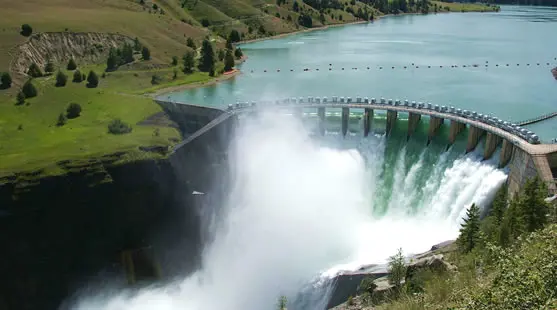A new joint venture has been formed for the construction of the 900 MW Upper Karnali hydropower project in Nepal. The joint venture consists of the Indian Renewable Energy Development Agency (IREDA), GMR Energy, SJVN Ltd, and the Nepal Electricity Authority. Formalized in New Delhi, India, the agreement states the framework for the development, construction, maintenance and operation of the facility. The project will be under the Build-Own-Operate-Transfer (BOOT) model, operating for 25 years from the start of the commercial operation date. After this, it will be transferred to the Nepalese government.
Also Read L&T to supply more power in India and Middle East in latest orders
Project Cost
The Asian Development Bank has partly funded the project which has an estimated cost so far of US$1.5 billion. Once construction begins, it is expected to take 5 years to be completed and will open up job opportunities for an estimated 3,000 people during construction. The project is expected to expand and accelerate renewable energy in the region. Furthermore, it will strengthen energy security according to IREDA. Most of the electricity generated, 792 MW of power to be exact, will be exported to countries such as Bangladesh and India. Further,Nepal is expected to utilise only 108 MW of the power generated from the project located over the River Karnali.
Project Overview
Location: River Karnali, Nepal
Project capacity: US$1.5 billion
Project Team: Indian Renewable Energy Development Agency (IREDA), GMR Energy, SJVN Ltd, and the Nepal Electricity Authority
Construction start date: 2027
Completion date: 2032
Construction Timeline of the Upper Karnali Hydropower Project in Nepal
The project is expected to begin construction in 2027 and be completed by 2032. Additionally, the Upper Karnali project will reduce greenhouse gas emissions used by countries in the region by providing substitute, clean energy. Officials have stated that they hope it will strengthen the Nepal-India bilateral relations through their shared energy development goals. The project also aligns with the country’s goals to harness its vast hydropower potential.

